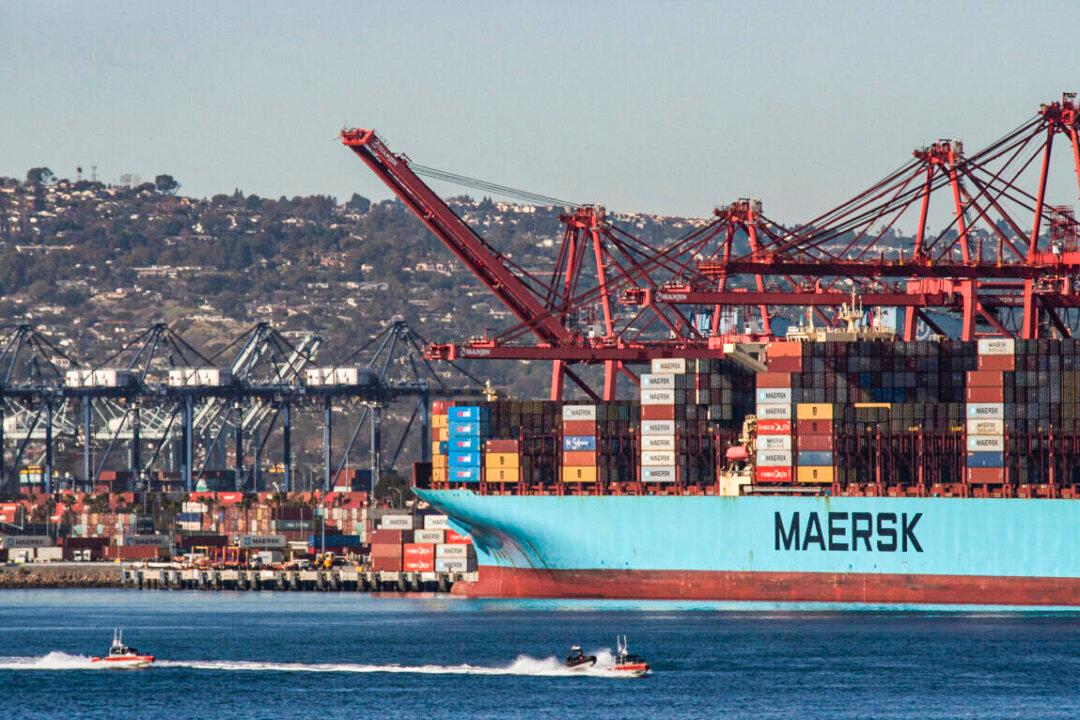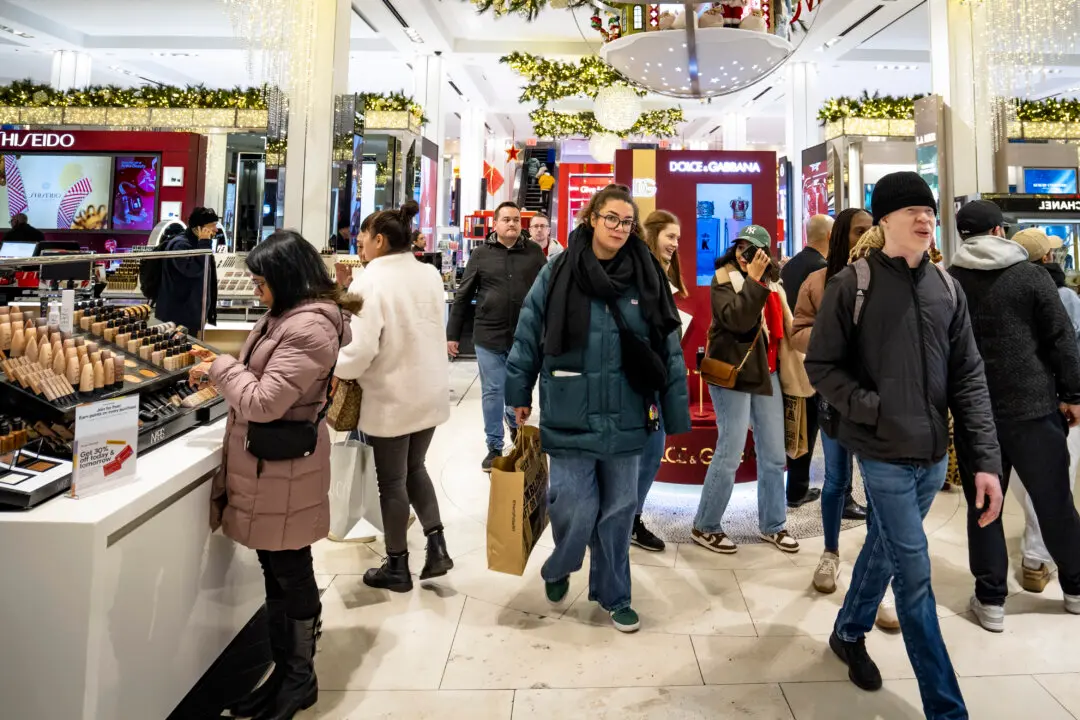LOS ANGELES—The time containers are staying at ports in Los Angeles and Long Beach before being shipped by rail or truck increased again last month, according to the Pacific Merchant Shipping Association.
In March, containers leaving on trucks stayed at port terminals for more than six days, an increase of about half a day since February.





